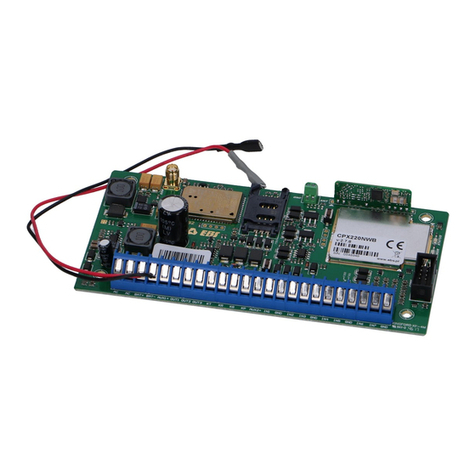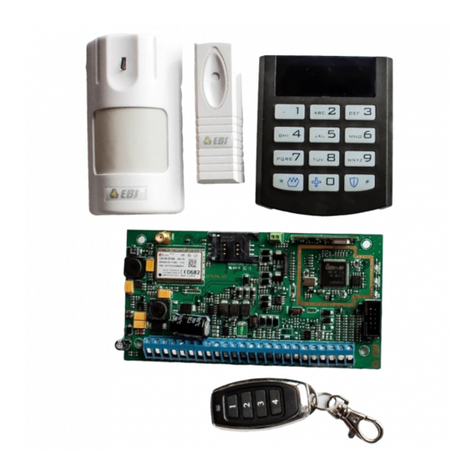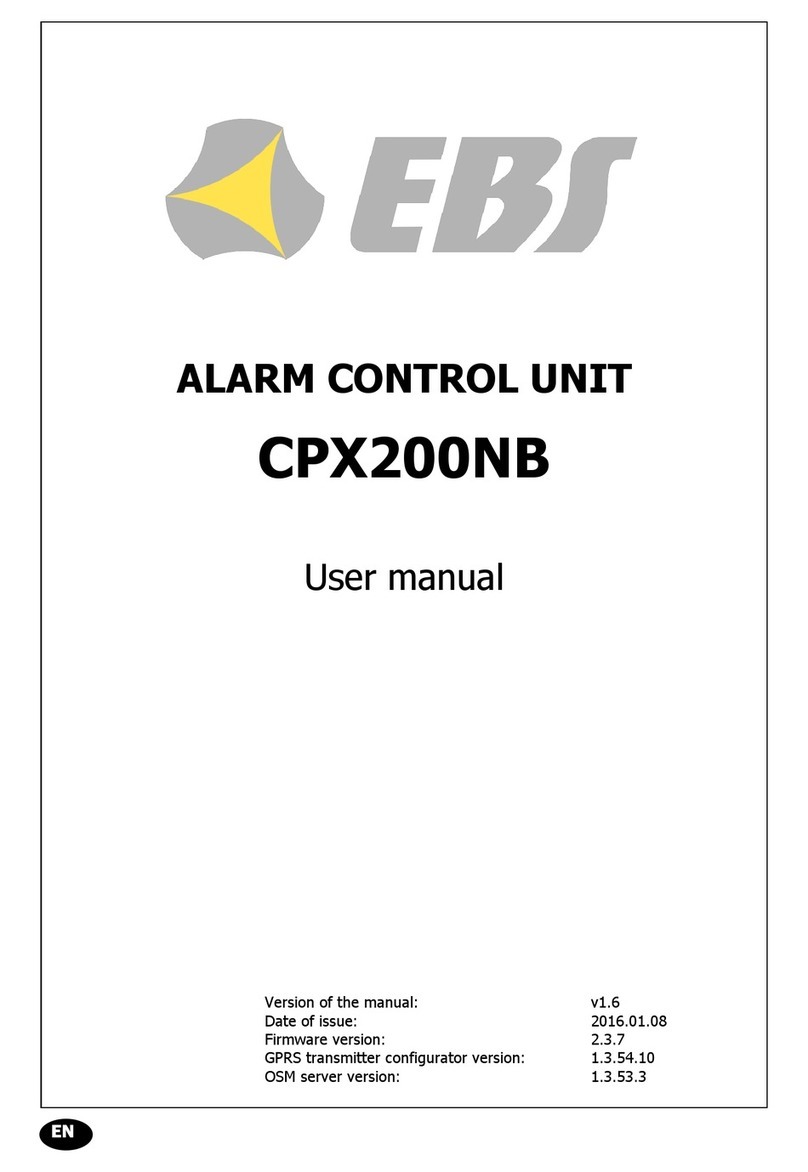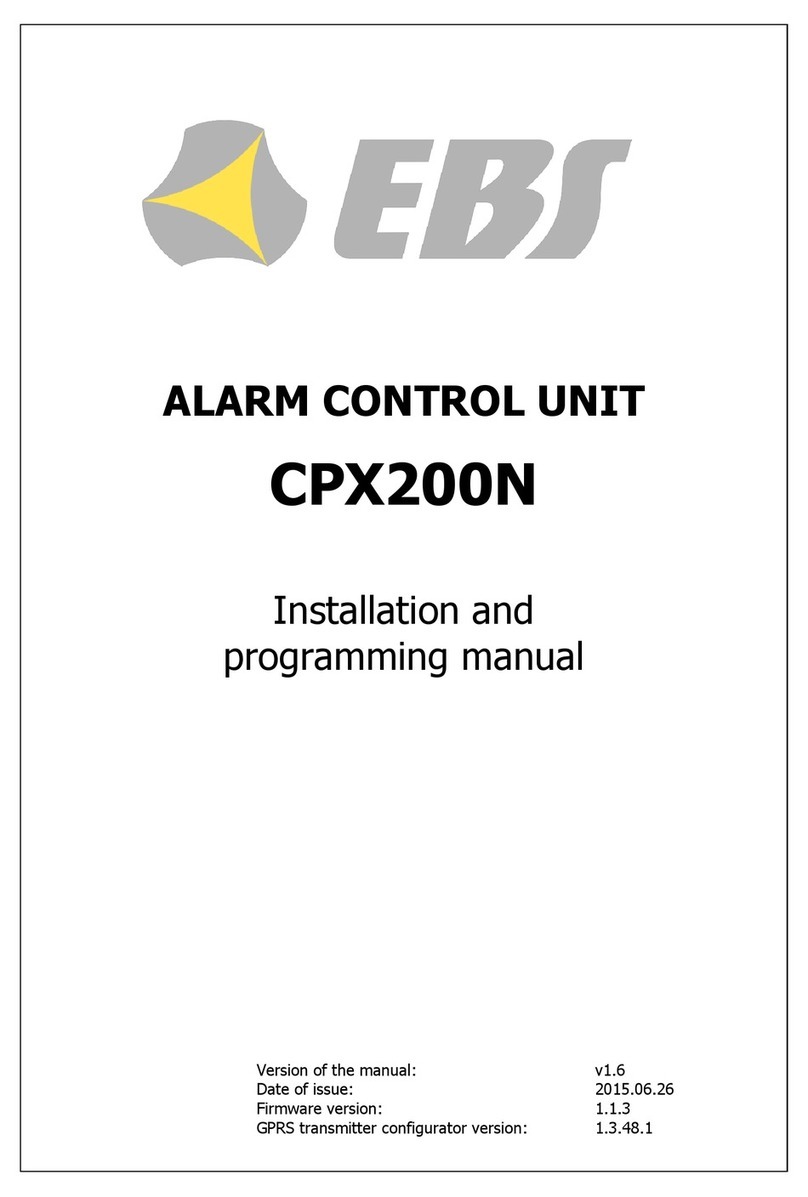
CPX220NWB ALARM CONTROL UNIT –INSTALLER MANUAL 4 / 123
5.3.1. MENU -> FILE ........................................................................................................................ 52
5.3.2. MENU -> OPERATIONS ........................................................................................................... 56
5.3.3. MENU -> HELP ....................................................................................................................... 58
5.4. DEVICE PROGRAMMING.................................................................................................................. 58
5.4.1. LOCAL PROGRAMMING ........................................................................................................... 58
5.4.2. REMOTE PROGRAMMING ........................................................................................................ 58
6. PROGRAMMABLE PARAMETERS.................................................................................................... 60
6.1. ACCESS.......................................................................................................................................... 60
6.1.1. PARAMETERS ......................................................................................................................... 60
6.1.2. ACCESS POINT NAME ............................................................................................................. 61
6.1.3. PRIMARY SERVER PARAMETERS.............................................................................................. 62
6.1.4. SECONDARY SERVER PARAMETERS......................................................................................... 63
6.1.5. ACCESS.................................................................................................................................. 63
6.2. TRANSMISSION.............................................................................................................................. 65
6.3. INPUTS / OUTPUTS ........................................................................................................................ 66
6.3.1. ZONES ................................................................................................................................... 66
6.3.2. WIRELESS ZONES................................................................................................................... 70
6.3.3. PARTITIONS........................................................................................................................... 73
6.3.4. OUTPUTS ............................................................................................................................... 75
6.3.5. REMOTE CONTROLLERS.......................................................................................................... 76
6.3.6. EMERGENCY BUTTONS ........................................................................................................... 78
6.4. SYSTEM OPTIONS .......................................................................................................................... 79
6.4.1. SHOW FAILURES HISTORY WITH SYSTEM DIODE .................................................................... 79
6.4.2. IGNORE ATS FAILURE............................................................................................................. 79
6.4.3. TURN AUTOMATIC OVERRIDE FOR FAILURE OFF ..................................................................... 79
6.4.4. ACCESS TO ALARM AND FAULT MEMORY REQUIRES AUTHORIZATION ..................................... 79
6.4.5. ALARMS AND INPUTS INTERLOCKING STATES ARE NOT DISPLAYED ........................................ 80
6.4.6. TEMPORARY KEYBOARD LOCK AFTER THREE ACCESS FAILURES .............................................. 80
6.4.7. USE DURESS CODE................................................................................................................. 80
6.4.8. SHOW PARTITION ARMING MODE INSTEAD OF INPUTS INTERLOCKING STATES ...................... 80
6.5. USERS ........................................................................................................................................... 80
6.6. MONITORING................................................................................................................................. 81
6.6.1. EVENTS.................................................................................................................................. 82
6.6.2. ADDITIONAL DATA ................................................................................................................. 83
6.7. RESTRICTIONS............................................................................................................................... 84
6.7.1. SMS AND DATA CALLS (CSD) .................................................................................................. 84
6.7.2. REMOTE COMMANDS.............................................................................................................. 87
6.8. SMS NOTIFICATIONS...................................................................................................................... 88
6.8.1. PHONES ................................................................................................................................. 88
6.8.2. MESSAGES ............................................................................................................................. 89
6.8.3. EVENTS.................................................................................................................................. 90
6.8.4. OPTIONS ............................................................................................................................... 91
6.8.5. SMS FORWARD ...................................................................................................................... 93
6.9. LINK CONTROL............................................................................................................................... 94
6.9.1. GSM....................................................................................................................................... 94
6.9.2. GPRS ..................................................................................................................................... 95
6.10. FIRMWARE..................................................................................................................................... 95
6.11. DEVICE MONITORING..................................................................................................................... 96
6.12. EVENTS HISTORY ........................................................................................................................... 97































